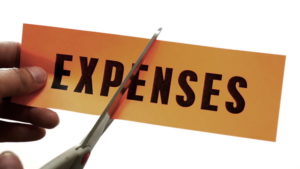Saving When You Save
 Saving is an important part of money management. It should be a part of everyone’s plan. However, saving is also very challenging for many. “How can I save when I don’t have enough money to pay my bills?” is a valid question that many ask. Debt and spending are two major obstacles people face as they begin their money management journey. Continue reading to see how you can overcome these obstacles and reach your savings goals.
Saving is an important part of money management. It should be a part of everyone’s plan. However, saving is also very challenging for many. “How can I save when I don’t have enough money to pay my bills?” is a valid question that many ask. Debt and spending are two major obstacles people face as they begin their money management journey. Continue reading to see how you can overcome these obstacles and reach your savings goals. First, I believe that it is important to address the major issues and get organized. It’s important to create a budget. Determine and write down all your sources of income. Then write down all of your expenses. This will help you to determine whether or not you have enough income to pay for your expenses. You will either have more income than expenses or more expenses than income. If you have more income, then you can either use it to pay down debt faster or to save some or more money. If you have more expenses, then you either need more income or you need to cut your expenses. There are various ways to cut expenses.
First, I believe that it is important to address the major issues and get organized. It’s important to create a budget. Determine and write down all your sources of income. Then write down all of your expenses. This will help you to determine whether or not you have enough income to pay for your expenses. You will either have more income than expenses or more expenses than income. If you have more income, then you can either use it to pay down debt faster or to save some or more money. If you have more expenses, then you either need more income or you need to cut your expenses. There are various ways to cut expenses. First, you must determine what is a need and what is a want. If the expense is not an absolute need, then you can choose to cut or to decrease it. Phone, cable, internet, gym, and eating out are examples of bills and expenses you can review to cut or to decrease. After your make the cut(s), the next thing you do is very important. You can use the savings for savings. It may be only $5, $10, or $25 but you have to start somewhere. Open a savings account and have the saved money automatically transferred to the savings account every week or every month. Instead of spending the money you are saving, you can actually save it and build the reserve you need in case of an emergency. Over time you will see the deposits add up and the amount will grow. Saving is possible. All the best.
First, you must determine what is a need and what is a want. If the expense is not an absolute need, then you can choose to cut or to decrease it. Phone, cable, internet, gym, and eating out are examples of bills and expenses you can review to cut or to decrease. After your make the cut(s), the next thing you do is very important. You can use the savings for savings. It may be only $5, $10, or $25 but you have to start somewhere. Open a savings account and have the saved money automatically transferred to the savings account every week or every month. Instead of spending the money you are saving, you can actually save it and build the reserve you need in case of an emergency. Over time you will see the deposits add up and the amount will grow. Saving is possible. All the best.Click here to get a free copy of my eBook: Money Management 101